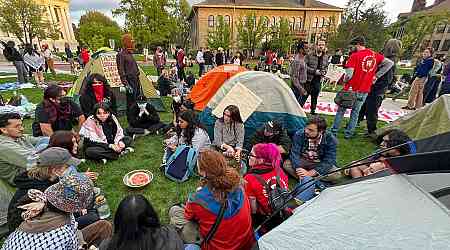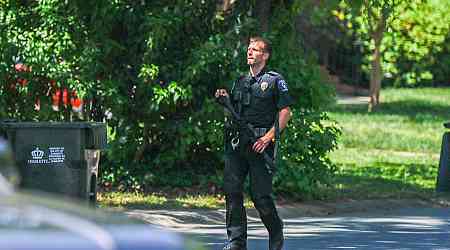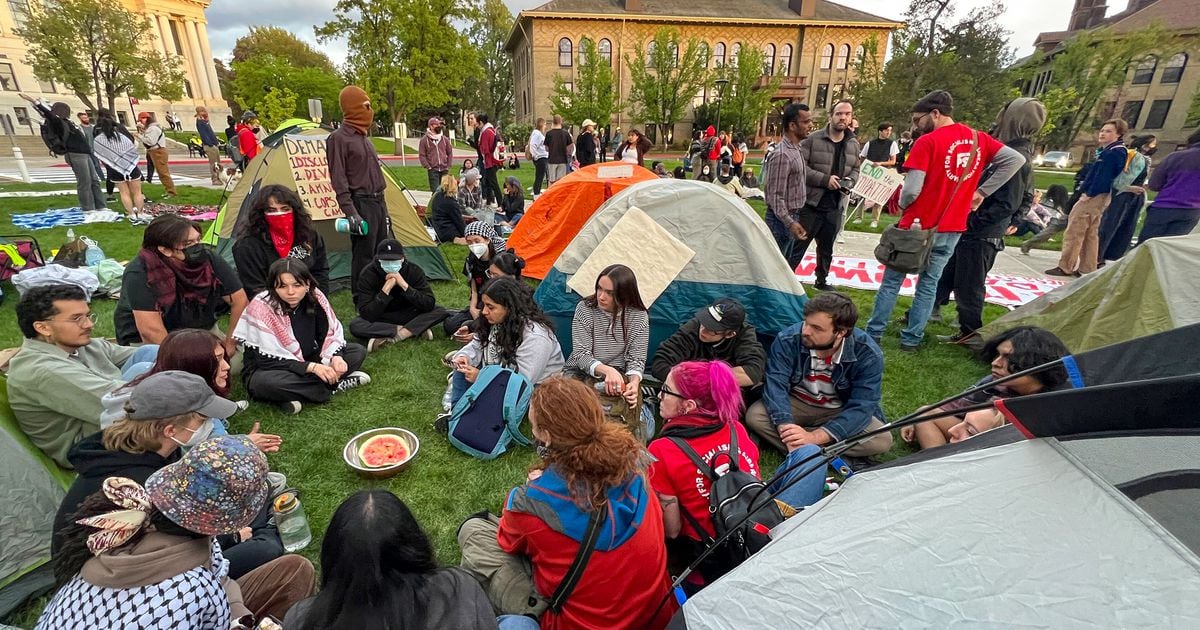In the middle of the last century, as the United States and Russia rapidly amassed thousands of nuclear weapons, China stayed out of the arms race, focusing its energy on growing its economy and broadening its regional influence.
Beijing did build hundreds of nuclear weapons during those years, but the nation’s leaders insisted their modest arsenal was merely for self-defense. Since China’s first nuclear weapons test, in 1964, the country has pledged loudly to never go first in a nuclear conflict — no matter what. That stance, coupled with a stated strategy of “minimum” deterrence, didn’t demand the level of American fear, loathing and attention that the Russian threat did.
Now there is increasing unease in Washington about China’s nuclear ambitions. The Pentagon says Beijing is on track to double the number of its nuclear warheads by the decade’s end, to 1,000 from 500 — a development that senior U.S. officials have publicly called “unprecedented” and “breathtaking.” China has drastically expanded its nuclear testing facility and continued work on three new missile fields in the country’s north, where more than 300 intercontinental ballistic missile silos have recently been constructed.
China’s transformation from a small nuclear power into an exponentially larger one is a historic shift, upending the delicate two-peer balance of the world’s nuclear weapons for the entirety of the atomic age. The Russian and American arsenals — their growth, reduction and containment — have defined this era; maintaining an uneasy peace between the two countries hinged on open communication channels, agreement on nuclear norms and diplomacy.
Little of that nuclear scaffolding exists with China. In Washington, how exactly to interpret Beijing’s sharp nuclear buildup is still a matter of debate. At best, American officials say, their Chinese counterparts are trying to catch up with the United States and Russia, which still each have roughly a 10-to-1 nuclear advantage over China with their stockpiles. At worst, they say, this is Beijing’s boldfaced attempt to deter the United States from defending Taiwan against a Chinese invasion, the most likely flashpoint for an armed conflict between the competing superpowers.
In truth, no one knows what China is planning. President Xi Jinping’s government, as with much of its domestic policy, releases vanishingly little information about its nuclear intentions, strategies or goals, and it has been equally unwilling to engage on arms control.
That is, until now.
In February, in a rare offer for nuclear diplomacy, China openly invited the United States and other nuclear powers to negotiate a treaty in which all sides would pledge never to use nuclear weapons first against one another. “The policy is highly stable, consistent and predictable,” said Sun Xiaobo, director general of the Chinese foreign ministry’s Department of Arms Control, in Geneva on Feb. 26. “It is, in itself, an important contribution to the international disarmament process.”
The invitation came as a surprise. While Beijing has long claimed moral superiority over other nuclear powers on this issue — China and India are the only nuclear-armed nations to declare a no-first-use policy — opening the possibility for talks in such a public way is something China hasn’t done in years.
It may seem like a no-brainer to take China up on the offer — wouldn’t it be better if everyone agreed not to be the first to use their nuclear weapons? — but it has been met with public silence from Washington. For American policymakers, committing to no-first-use is deeply divisive. The United States, the only nation to ever use nuclear weapons in conflict, when it dropped two atomic bombs on Japan in 1945, has never ruled out being first to use them again, nor has it detailed the circumstances under which it would consider doing so. This approach of calculated ambiguity is intended to prevent adversaries from taking military action against the United States — and the more than 30 allies it is bound by treaties to defend — out of fear for what could come their way in response.
It’s also a personal issue for President Biden. He supported a no-first-use policy as vice president amid deliberations inside the Obama administration, and as a presidential candidate on the campaign trail he said the “sole purpose” of the U.S. nuclear arsenal should be aimed at deterring or retaliating against an adversary’s nuclear attack. But when it came time for his own administration to adopt a declaratory nuclear policy, he decided not to break with America’s longstanding nuclear dogma and retained the first-use option.
Mr. Biden’s about-face was a sign of the times, a result of both internal deliberations and consultations with allies in Europe and Asia. According to current and former administration officials, these nations’ leaders feared a U.S. policy reversal would undermine confidence in America’s commitment to come to their defense and would potentially embolden China, Russia and North Korea.
The uneasiness surrounding a potential change to America’s first-use policy almost certainly played a role in China’s unusually public invitation to negotiate. China may simply be trying to stoke anxieties among American allies and partners — and particularly Taiwan, South Korea and Japan — by floating a public offer outside of private diplomatic channels.
It’s not the first time it has gone down this road. During the Cold War, China made offers for a mutual no-first-use pledge at the United Nations in 1971 and 1982, and presented a draft treaty in 1994 to the other nuclear weapons states. Four years later, China tried to persuade President Bill Clinton to change American nuclear policy when he visited Beijing, but Mr. Clinton decided against it, choosing instead to share a pledge to stop targeting each other with their nuclear weapons.
Such overtures have all but halted under the leadership of Mr. Xi, who has pursued a far more aggressive foreign policy. He has overseen a sweeping modernization of China’s military, including developing and fielding new nuclear-capable missiles, submarines and bombers. Meanwhile, the stockpile of warheads steadily climbs.
The White House believes that China’s recent offer is a distraction from its broader unwillingness to engage diplomatically on the nuclear portfolio, including its own aggressive buildup. The Biden administration is wrestling with how it can deter both China and Russia without touching off a destabilizing three-way arms race. Jake Sullivan, Mr. Biden’s national security adviser, publicly invited the two nations last summer to hold nuclear arms control deliberations without preconditions. Russia dismissed the offer outright, while China agreed to preliminary talks. At a follow-on meeting in November, the United States proposed possible measures to manage nuclear risks, such as an agreement to notify one another when their militaries test-launch ballistic missiles.
“The P.R.C. has yet to respond or show interest in engaging substantively on these proposals,” a National Security Council spokeswoman, using the abbreviation for the country’s formal name, the People’s Republic of China, said in a written response to questions about Beijing’s recent offer. “This P.R.C. behavior calls into question the aims behinds the P.R.C.’s call for discussions of a no-first-use treaty.”
Some argue the Biden administration should take Beijing’s offer at face value. “China genuinely believes that any serious nuclear arms control discussion needs to start with no-first-use,” said Tong Zhao, a nuclear expert focused on China at the Carnegie Endowment for International Peace. “From Beijing’s view, that’s the most effective way to reduce the role of nuclear weapons.”
Even if it is a strategic gambit, engaging with China and other nuclear nations on first-use talks could be a crucial step in establishing critical guardrails for the new nuclear era. It would be a major breakthrough for Washington to get China to the table for arms control talks. It could also help jolt the stalled relations between the United States and Russia, which together control nearly 90 percent of the world’s nuclear warheads.
“U.S. administrations have not responded with great alacrity or interest to Chinese outreach on the question of no-first-use,” said Steve Andreasen, who served as Mr. Clinton’s director for defense policy and arms control on the National Security Council. “But as we look forward into … the increasing U.S. national interest in engaging China in all things nuclear, we’re going to have to cross the Rubicon on this issue.”
It’s true that it’s not an easy time for trust-building exercises; the current level of mistrust between Chinese and American military intentions is deep. Speaking to Congress in March, Gen. Anthony Cotton, commander of all U.S. nuclear forces, suggested that China’s rapid nuclear expansion indicated its no-first-use policy was no longer credible. The Pentagon wrote in an October report that, despite China’s rhetoric, Beijing might consider using nuclear weapons first anyway during a crisis if it came down to the survival of Mr. Xi’s regime, such as defeat in a war with Taiwan. It also remains unclear how exactly China would respond if its nuclear forces were hit during a conflict. Would that trigger Beijing’s nuclear use? “Unknown,” the Pentagon said in the report.
Talking through these points of contention may help Beijing and Washington understand and appreciate the factors that go into formulating the finer points of each other’s nuclear policy. The very process of dialogue and diplomacy can help the Chinese hear American concerns, and vice versa. Given the widening gulf of fear and suspicion between the two nations around Taiwan, there is no better moment for them to sit down and discuss what constitutes a credible no-first-use commitment.
It may be that an unequivocal no-first-use pledge ends up being impossible. The talks may not result in a deal anyone can agree upon, and even if a deal were to be reached, it would be impossible to verify, meaning it would be more symbolic than substantive. But that doesn’t mean Washington shouldn’t take up Beijing’s invitation. In the increasingly endangered world of nuclear diplomacy, discussions on one treaty can still set the table for another. New START, the only remaining major arms control agreement between the United States and Russia, was built on the foundation of the original START I, which was signed two decades earlier.
Under Mr. Xi, China appears to have left its policy of minimum deterrence behind. If the Biden administration is serious about arms control, it’s time to look for common ground with Beijing to build new agreements for a safer future.
This Times Opinion series is funded through philanthropic grants from the Carnegie Corporation of New York, the Outrider Foundation and the Prospect Hill Foundation. Funders have no control over the selection or focus of articles or the editing process and do not review articles before publication. The Times retains full editorial control.
W.J. Hennigan writes about national security, foreign policy and conflict for the Opinion section of The New York Times. This article originally appeared in The New York Times.





























